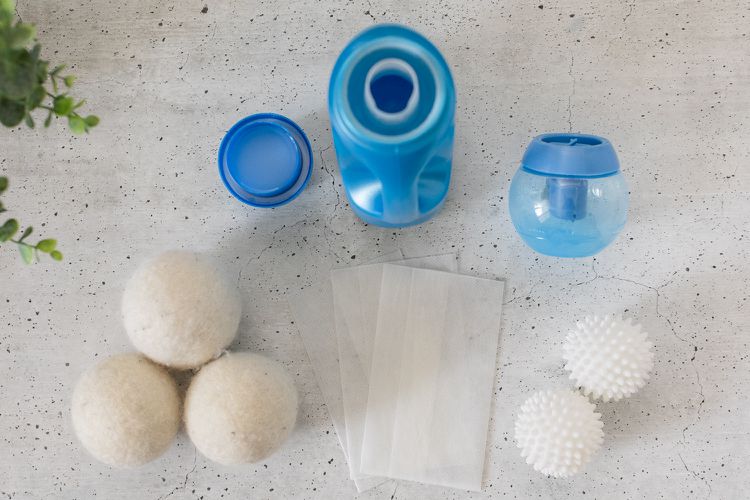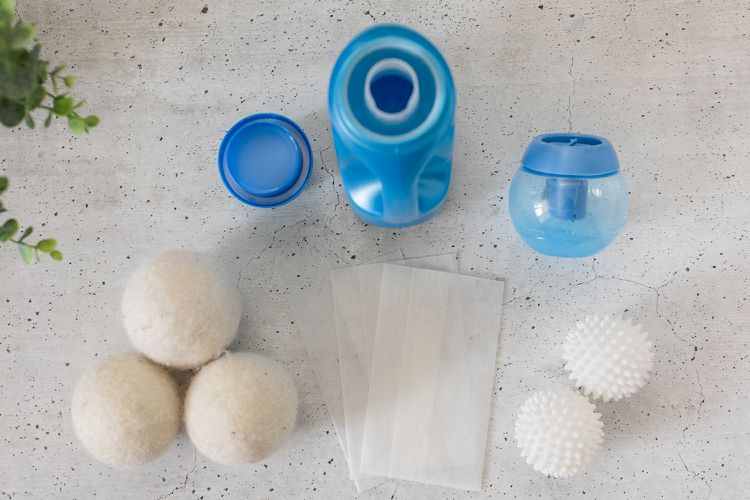Laundry
How and When to Use Fabric Softener in Your Laundry

When most people think of fabric softener, they picture a liquid that adds fragrance to laundry, softens clothes, and reduces static. The lubricating chemicals in fabric softeners coat fabrics, making them feel softer. Static electricity that builds up in automatic dryers creates a negative charge on clothing atoms. Fabric softeners contain cationic, positively charged ions, which balance out the negative charge and prevent static.
Fabric softeners come in liquid form, as dryer sheets, or as reusable dryer balls.
Liquid fabric softener is added during the rinse cycle of your washing machine. By adding it at this stage, the product has time to saturate and coat the wet fibers. It can be either scented or unscented. Fabric conditioners contain ingredients that help prevent fading, stretching, and pilling, while softening your laundry.
Dryer sheets are typically made from non-woven synthetic fabric, coated with a solution of quaternary ammonium salt or silicone oil-based fabric softener. When exposed to dryer heat, the softener melts and transfers to fabrics, making them feel softer.
Dryer balls, made from natural fibers like wool or synthetic materials, do not leave a chemical coating on clothes. Instead, they reduce static by balancing out electrons and ions, while also softening fabric by bouncing around in the dryer and helping to reduce lint.
Before Using Fabric Softener
Before applying liquid fabric softener or dryer sheets, check the care labels on your clothing. Some fabrics may be negatively affected by fabric softeners, as they can leave a coating that impacts fire resistance, breathability, or moisture-wicking properties.
WARNING:
Avoid using liquid fabric softener or dryer sheets on the following fabrics:
- Flame-resistant clothing, especially children’s pajamas (can reduce self-extinguishing capacity)
- Water-repellent fabrics (can reduce performance)
- Microfiber cleaning towels (softener may bond with oils, decreasing absorbency)
- Athletic wear (can impair moisture-wicking)
- Microfiber fleece or compression garments (can reduce breathability)
What You’ll Need:
- Washer
- Automatic dryer
- Wool or synthetic dryer balls
- Liquid fabric softener
- Dryer sheets

How to Use Liquid Fabric Softener:
- Fill the Fabric Softener Dispenser:
Most washers have a fabric softener dispenser. Add the liquid softener according to your washer’s instructions before selecting your laundry cycle. - Add Manually to the Final Rinse Cycle:
If your washer doesn’t have a dispenser, manually add the fabric softener when the washer drum fills with water during the rinse cycle. - Use a Fabric Softener Dispenser Ball:
If you forget to add fabric softener during the rinse cycle, a plastic ball can automatically release the fabric softener at the right time during the wash. However, these may cause stains if the washer doesn’t have enough water for even distribution.
How to Use Dryer Sheets:
- Load Wet Laundry into the Dryer:
Give each piece of wet laundry a quick shake and load it into the dryer. Avoid overloading, as the dryer sheet needs room to circulate. - Add the Dryer Sheet:
Place the dryer sheet on top of the laundry. Adding it last ensures it moves freely and doesn’t get trapped. - Remove the Dryer Sheet:
After the cycle ends, remove the dryer sheet. Don’t leave it in the drum to avoid clogging the lint filter or blocking air vents. Dispose of it properly.
How to Use Dryer Balls:
- Load the Dryer With Wet Laundry:
Place the freshly washed laundry into the dryer. - Add the Dryer Balls:
Add 2-3 wool or plastic dryer balls on top of the wet clothes to reduce static. At the end of the cycle, remove them and store for reuse.
Tips for Using Fabric Softeners:
- Clean your washer regularly to avoid build-up of softener lubricants, which can trap soil and odors.
- If using dryer sheets, clean your dryer at least four times a year to prevent residue from redepositing on fabrics.
